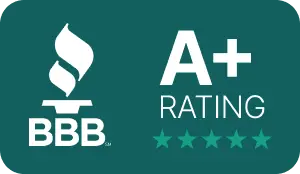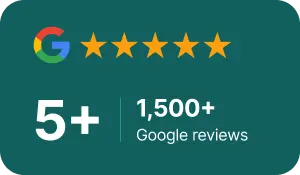When heirs need liquidity now—not after probate winds through the courthouse—the immediate question is “Which cash-out option costs less in the long run?” Below we outline how three common solutions stack up on fees, risk, and repayment mechanics. We’ll also flag the approval hurdles, paperwork, and funding-partner choices that can tilt true costs up or down.
Setting the Stage: Three Paths to Cash
Inheritance Advance. A funder purchases a slice of your future distribution and is repaid solely from estate proceeds, making the transaction non-recourse. Pricing comes as a one-time discount fee that is capped on Day 1—no ticking interest clock.
Probate Loan. A lender records a secured lien against your expected share. Repayment can come from the estate or you personally, because the loan is recourse. Costs accrue through monthly interest (simple or compound) plus origination and servicing fees.
Personal Loan. A bank or fintech issues an unsecured loan to you personally, with repayments drawn from your income on a fixed schedule. Cost shows up as an APR that compounds over time; late fees and credit reporting apply.
Why the headline rate can mislead. The cheapest-looking option isn’t always cheapest once timelines, collateral requirements, and approval odds are factored in. In counties where estates routinely take 18 months to close, a probate loan’s interest can quietly double the payoff while an advance’s discount fee stays flat.
Approval Friction: The Silent Cost Driver
Underwriters price risk. If you don’t meet the seven key approval factors that drive inheritance-cash decisions—clean title to assets, low estate debt, cooperative executors, and more—expect steeper fees or outright turndowns. Clarifying where you stand on those metrics early avoids wasting application fees and weeks of waiting. Know the bar you need to clear before comparing quotes.
Paperwork: Speed Saves Money
Nothing inflates carrying costs faster than delays. Gathering every document probate-loan companies ask for—death certificate, letters testamentary, current inventory, interim accountings—lets underwriters confirm collateral quickly and lock in lower pricing. Missing even one item often triggers “administrative hold” fees or higher interim interest. A proactive document packet keeps the meter from running. See the full checklist and assemble it before you sign an application.
Channel Choice: Direct Lender or Broker?
Two heirs can request the same $75,000 advance and walk away with radically different payoffs because one went through a broker. Brokers add mark-ups, sometimes hidden inside “processing” line items. Working with a direct lender compresses the fee stack and gives you negotiating leverage on large transactions. Evaluate whether your quote comes straight from a balance-sheet funder or is being shopped. Understand how the route you take affects cost.
The “Ask Before You Sign” Test
Fine print is where personal-loan prepayment penalties hide and probate-loan compounding schedules lurk. A disciplined question set—confirming repayment caps, dispute-resolution terms, and lien-release time-frames—can surface back-loaded costs before they bite. Run through ten critical questions with any prospective funder so nothing expensive hides between the lines. Pressure-test the agreement upfront.
Size Matters: Six-Figure Math Changes Everything
Once advance sizes cross into six-figure territory, every fraction of a discount point or interest-rate bump magnifies. Small inefficiencies that feel minor on a $20,000 draw balloon into five-digit differences on a $150,000 infusion. If your liquidity need is substantial—say, buying out a sibling’s half of a family property—model the numbers with large-advance assumptions: court-approval timelines, estate-tax liens, and executor indemnities all scale. Understand the unique economics of big advances before committing.
Bottom-Line Cost Comparison
Initial Fees. An inheritance advance typically carries an 8 – 15 percent one-time discount based on risk and estate size. Probate loans often start with a 3 – 6 percent origination fee plus recording costs, while personal loans range from zero to roughly eight percent in origination.
Ongoing Costs. Advances have none; the discount is capped on Day 1. Probate loans accrue simple or compound interest each month until probate closes. Personal loans accrue APR interest over a fixed term, and late fees apply if you miss payments.
Timeline Sensitivity. Inheritance advances are timeline-neutral because cost is fixed. Probate-loan costs rise the longer probate lags. Personal-loan costs are time-bound but your credit suffers if you miss payments while waiting on the estate.
Collateral. An advance is secured only by your estate share and is non-recourse. Probate loans may add a personal guarantee alongside the estate lien. Personal loans rely on your creditworthiness and future income.
Credit-Report Impact. Inheritance advances do not appear on your credit file. Probate loans might trigger a hard pull and show up as secured debt. Personal loans always report and influence your FICO® score.
Deciding Which Tool Fits Your Wallet
- Need certainty and zero monthly payments? The capped cost of an inheritance advance often wins.
- Confident probate will wrap quickly? A short-term probate loan may pencil out if interest can’t snowball.
- Comfortable with personal liability and stellar credit? A personal loan offers flexibility but risks your FICO if probate drags.
Ultimately, cost isn’t just a percentage—it’s predictability, paperwork burden, and approval odds rolled together. Evaluate each lever, line up your documents, vet your funding partner, and drill the agreement with hard questions. When that discipline meets a clear liquidity goal, you’ll know which path turns tomorrow’s inheritance into today’s opportunity at the right price.








